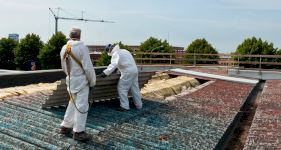Cost of Plastering a Ceiling
- Average cost for plastering a ceiling is £275
- It will take roughly a day to complete
- A breakdown of pricing information for materials and labour fees
- How long the job will take and a general overview of what the job entails
- How to find and hire a plasterer
Trying to find out the cost to plaster a ceiling?
In this guide, we look at the ceiling plasterer prices, plasterboarding a ceiling cost, and skimming and plastering ceilings of different sizes.
We also look at how long plastering a ceiling takes and any other additional costs involved.
For all the information carry on reading below...
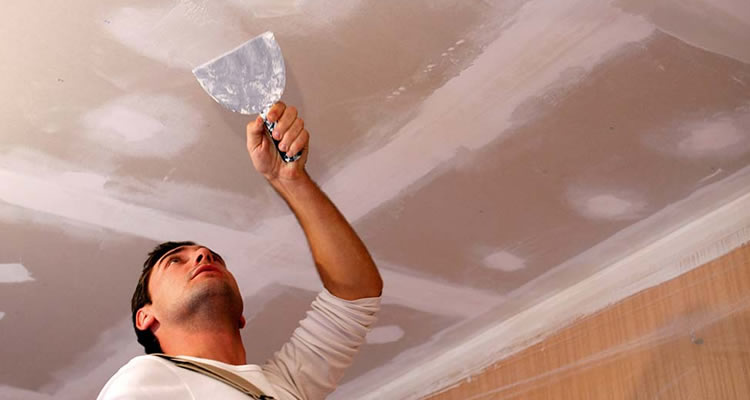
£275
Table of Contents
- How Much To Plaster A Ceiling?
- Supply Only Costs
- Additional Costs
- Labour Costs and Timescales
- Cost Factors of Plastering a Ceiling
- What's Involved in Plastering a Ceiling?
- Can I Plaster a Ceiling Myself?
- Types of Ceiling Plaster
- Building Regulations & Planning Permission for Plastering a Ceiling
- Does My Ceiling Need Plastering?
- Benefits of Plastering a Ceiling
- Ceiling Plaster Repair and Maintenance Cost
- Hiring Contractors to Plaster a Ceiling Checklist
- FAQs
- Sources
How Much Does Plastering a Ceiling?
Obviously, if the plaster on your ceiling is all cracked and falling down on your head, you know it's time to re-plaster, but it doesn't always have to be that obvious!
If your ceilings are looking a bit tired and painting never seems to make much difference, then it's probably time to consider having the plaster renewed to provide a fresh and smooth new canvas on which to base your decorating efforts.
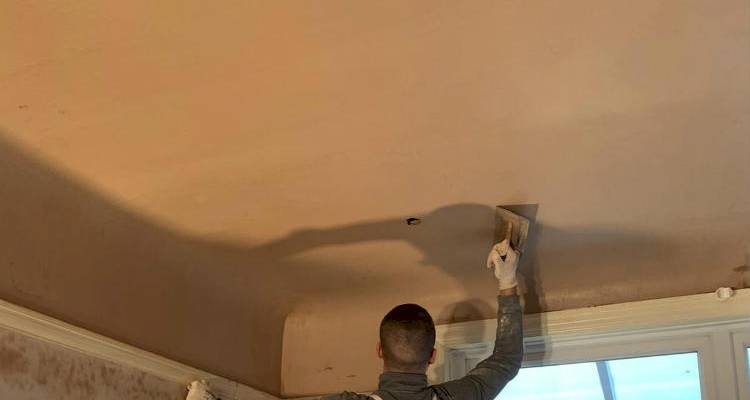
Plastering prices may vary depending on the size of your ceiling. For instance, a small ceiling typically costs £200 to £350, £280 to £440 for a medium-sized ceiling and £430 to £730 for a large ceiling.
These prices are based on wet plaster installation; however, if you would prefer plasterboard, then you should expect to pay £400 to £500 for a small room, £600 to £700 for an average-sized room and £750 to £1000 for a large ceiling.
The above prices may vary depending on how long the job takes, as well as how high your ceilings are, as the steeper the ceiling, the harder it will be to plaster.
Recently I have purchased a new plaster ceiling rose (approx. 90cm in diameter) and I will be having a room re-plastered and decorated in the coming weeks. The decorator I have hired has not had much experience with installing ceiling roses and certainly not one as large/heavy as this one. If anyone has any experience with this, could they please recommend the best options to install it safely and successfully. Many Thanks, P
In any case, they will need an adhesive or glue to attach it by pressing it slowly to the ceiling. Afterwards, screws can be used to keep the ceiling rose attached. Any holes can be covered later, after the adhesive has dried completely. Others may have differing ideas about this, but most will still involve the use of an adhesive and screws to attach the rose to the ceiling at some stage. Hope this helps you out."
Plastering a Ceiling Prices
Here is a breakdown of typical plastering costs for different-sized ceilings with plasterboard and wet plaster.
| Job Description | Plasterboard | Wet Plaster |
|---|---|---|
| Small ceiling | £400 to £500 | £200 to £350 |
| Medium ceiling | £600 to £700 | £280 to £440 |
| Large ceiling | £750 to £1000 | £430 to £730 |
Supply Only Costs
If you plan on conducting DIY plastering, then you should consider the following supply costs for different types of plaster.
| Type of Plaster | Supply Cost |
|---|---|
| Plasterboard | £3 to £54 per board |
| Undercoat plaster | £0.40 to £1 per kg |
| Multi-finish plaster | £0.30 to £0.40 per kg |
| Finishing plaster | £0.70 to £0.80 per kg |
Additional Costs
To answer the question of how much does plastering cost? You should take a look at additional jobs which may need to be performed alongside skimming plasterboard and ceiling plastering.
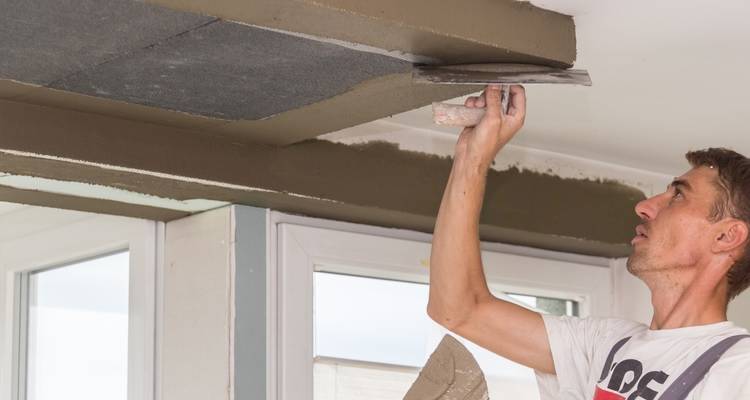
Painting and Decorating
Once your ceiling has been plastered, you can then decorate your room as you please. You can choose to paint your bedroom yourself or hire a professional to do it for you.
The average cost to apply two coats of paint to your walls and ceiling is around £400, however, if you need to have any old wallpaper removed you could end up paying £500 or more.
Installing a Light Fitting
After your ceiling has been plastered and painting, you can then install any light fixtures to brighten up the room.
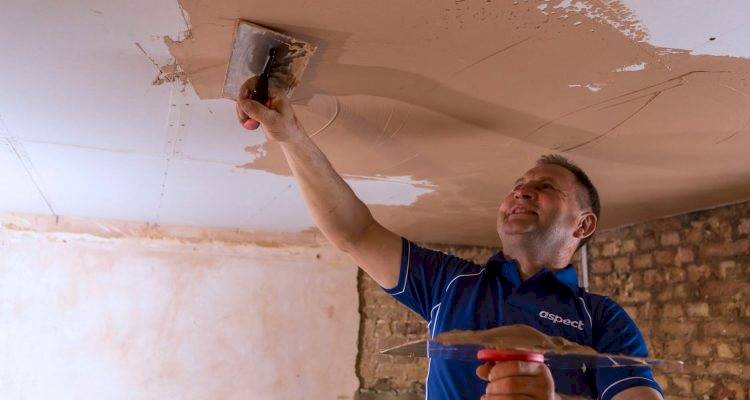
Again, you can fix a ceiling light yourself or call in a professional electrician to install and wire your lighting. This can cost anywhere from £130 for a single lightweight pendant to £900 for a 6-lamp lighting grid.
Plaster a Wall
You may also want to consider having your walls plastered along with your ceiling, which will completely rejuvenate your living space.
The cost of plastering a wall is generally around £225 for a single wall or for plastering repairs you can expect to pay £150 to £360. When hiring someone, make sure you employ someone who knows how to plaster a wall while providing a high-quality finish.
Labour Costs and Timescales
The average labour cost for plasterers is typically around £150 per day for general plastering and repairs jobs; however, they may charge up to £200 to plaster a ceiling as it tends to be a more difficult task.
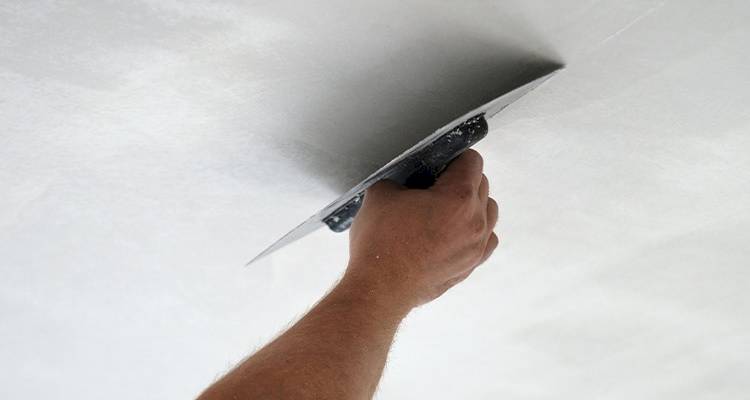
The timescale of plastering a ceiling will depend on the size and the type of plaster you use.
Generally, a small ceiling normally takes around one day to complete while a larger ceiling could take up to two days or more depending on the drying time.
Cost Factors of Plastering a Ceiling
In order to determine how much to plaster a ceiling, you will need to consider the following factors:
Type of Plaster
The type of plaster used is one of the most important factors as different types of plaster have varying costs. For instance, plasterboard is the most expensive as it costs anywhere from £3 to £54 per board.
There are also varying prices for wet plaster options with cheap choices including multi-finish plaster which costs £0.30 to £0.40 per kg, while undercoat plaster is normally priced at £0.40 to £1 per kg and finishing plaster costs £0.70 to £0.80 per kg.
Location of Property
Where you live is also a considerable factor as tradespeople tend to change their rates depending on how far they travel, so if you live in a rural area, you should expect to pay more.
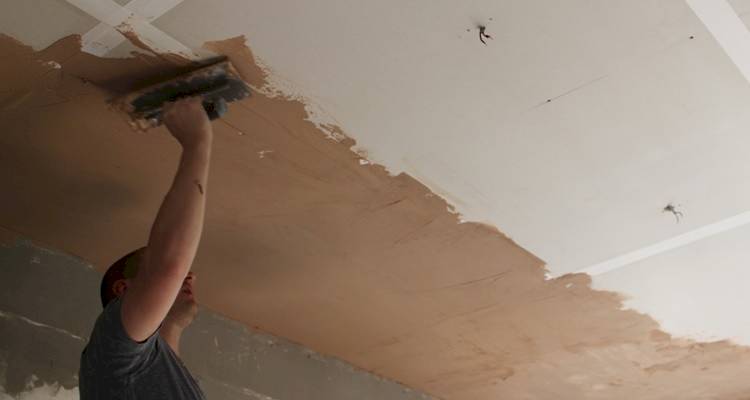
You will also receive higher quotes from plasterers in London who typically charge £200 per day, while tradespeople in the north-west normally have a set daily rate of £160.
Ease of Access
Another key element that is considering when evaluating a plastering job is the level of access to the ceiling, as lower ceilings tend to be much easier to work with.
If you have a high ceiling, then this will be much harder to plaster, so whoever you hire may charge extra as it will be a more time-consuming and challenging task.
Size of Ceiling
Before giving you a price, a plasterer may ask for measurements or take a look at the space to assess the size of the ceiling, as the larger your ceiling is, the more you will pay.
For example, a small bedroom ceiling may only cost £200 to £500, while a large living room ceiling is typically priced at £430 to £1000.
Quality of Finish
The plaster finish you choose will also determine the price, as some are a lot harder to achieve than others. If you have a low budget, then you may want to consider plain cement plaster which is one of the most popular plaster finishes.
Another standard option is sand face plastering with one part cement and four parts sand which helps to create a sandy look and feel. The latter is more expensive as it takes a lot longer to apply and requires extra care.
What's Involved in Plastering a Ceiling?
If you are unsure on the plastering process, take a look at the following guide which helps you understand how to plaster a ceiling.
- The first step usually involves measuring the ceiling space to ensure that they have the right materials for the job. If you have a non-sloping ceiling, the tradesman will measure the floor space to give accurate measurements.
- Once they have all the plastering materials, they will then start the job by removing or covering any furniture and flooring to avoid damage.
- Before plastering, the tradesman will prepare the ceiling by sanding down any uneven patches to get rid of any blemishes or faults. They will then remove any dust and wipe down the area with soap water to ensure all the dirt has gone. They may also add some degreaser to ensure the plaster sets properly.
- If applying wet plaster, this will need to be mixed with equal parts of plaster and water. A small amount of water will then be added to the ceiling along with the plaster using a skimming technique to lay on the plaster in thin rows. This should then be left for 48 hours before another layer is added.
- Installing plasterboard will involve lining up the boards in the corner of the room and then supporting them with noggins which will all be installed between the joists. Once the plasterboards are in place, perforated plaster tape will then be taped over the boards.
- After the boards have been taped up, the joint filler will then be mixed with water to make a stiff but smooth paste. Once it is thoroughly mixed, this will then be applied to the exposed joints on the boards using a trowel. The ceiling should then be left for 24 hours
- Once the 24 hours is up, the plasterer will then come back and sand down the ceiling with 120-grit paper. They will then clear away any dust to prevent an unpleasant build-up of dirt.
Can I Plaster a Ceiling Myself?
Plastering may look easy, but don't be tempted to try and do it yourself just because you have seen a plasterer do it and it looked easy. Plastering is one of the few trades where it really pays off to get a professional to do the work for you every time.
This is because it is a highly-skilled trade with its own tools and techniques which some never really get the knack for it no matter how much they practice.
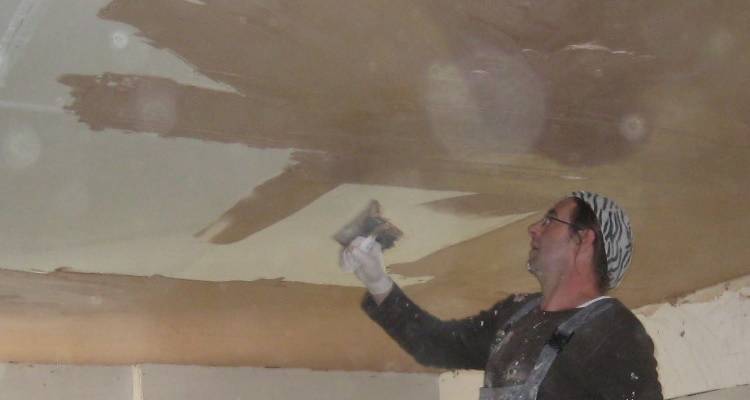
The main thing that catches out most DIY enthusiasts is just how quickly skim plaster goes hard. Skimming is as much about timing as anything else, as going for a polished finish too late, or too quickly, can result in a terrible mess.
Once skim has gone hard you cannot work with it anymore, the only option is to smooth it is by sanding, which will take forever and is incredibly tiring working with your arms overhead!
But it is the mixing of the skim plaster where it all goes wrong for many new to plastering. The plaster has to be mixed to a thick, sloppy consistency with no lumps. Always add dry plaster to water and mix, never add water to the powder.
However, If you do know how to skim a wall, then doing your own skim plastering can save you a fortune. But very few do have the skills to achieve a professional-looking finish, plus when you get it wrong, it can cost even more to put it right (the plasterer will likely have to strip off the mess you have made and start again).
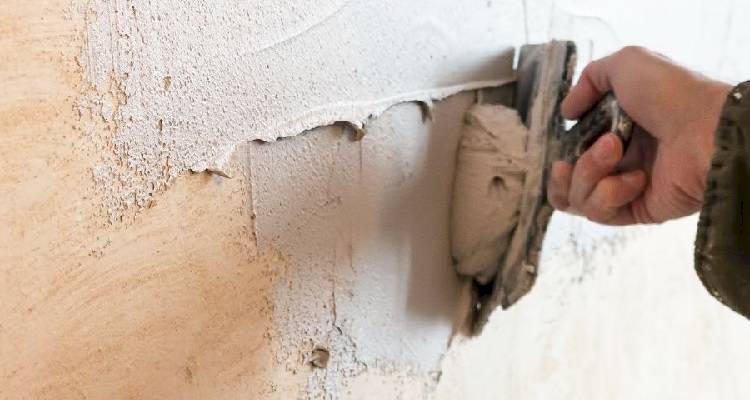
If you are a particularly handy person and think you may be able to do it, it may be worth buying a sheet of plasterboard and practising for a few hours just to see if you will be able to do it.
Check out our how-to guide on plastering:
Types of Ceiling Plaster
Different types of ceiling plaster may vary in cost due to broader construction trends. Our Construction Statistics page gives up-to-date insight on the latest trends in construction.
There are various types of plaster that can be used on a ceiling, including:
Plasterboard Cost
Plasterboard is basically a board made of two sheets of paper which are bonded together with plaster. The average cost of plasterboard is normally around £3 to £54 per board.
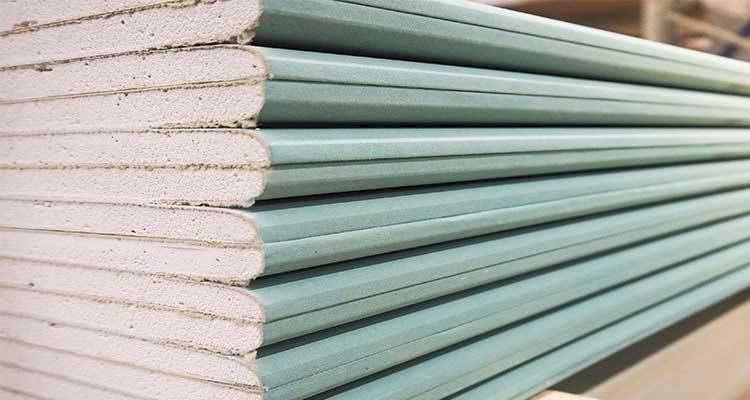
The main advantage of plasterboard is that they are very to install in comparison to wet plastering, which is a lot more time-consuming. There is also less risk of cracking as the plaster is already dry so they can also be fitted on a DIY basis as less skill is required.
If you have a sloping ceiling which is an odd shape that it can be a lot harder to make plasterboards fit. Applying plasterboard to a ceiling also does not offer great soundproofing abilities in contrast to wet plaster.
Wet Plaster Cost
Wet plastering is a traditional plastering method which involves mixing water with lime, gypsum or cement to create a smooth and durable finish. Plaster tends to range from £0.30 per kg for to £1 per kg for undercoat, multi-finish and finishing wet plaster.
The great thing about the wet plastering method is that it is very flexible as you can plaster ceiling surfaces of different sizes and shapes. It also provides a much cleaner finish and a high-quality seal which makes it much more airtight than plasterboards.
The main disadvantage of using wet plaster is that it requires the help of highly-skilled plasterer to ensure the plaster is skimmed onto the ceiling correctly. It also takes a significant amount of time to dry, so this can increase labour costs, as plasterer usually have to come back and apply a second or third layer.
Does My Ceiling Need Plastering?
Professional plasterers tend to advise having your ceiling plastered every ten years; however, this will depend on the plastering work as some high-quality finishes may last longer than others.
You should consider having your ceiling plastered If you have had any roof leaks, especially if you have any noticeable damp stains on your ceiling which can cause previous plastering work to rot or peel.
Benefits of Plastering a Ceiling
Having your ceiling plastered offers a wide range of benefits, including:
Smoother Appearance
One of the biggest advantages of having your ceiling plastered is that it provides a smooth finish which is much more attractive. This will completely enhance the look of your property and increase the value.
Easy to Paint Over
Plastering your ceiling will make it a lot easier to paint over, as it provides a smooth and durable surface which will make the painting process quick and will also enable it to last longer.
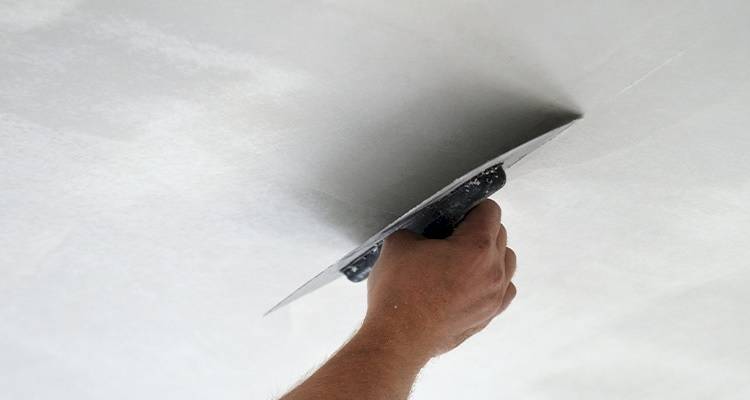
No More Cracks
Having your ceiling plastered will also repair any cracks in the sealing and make it a lot safer while also preventing leaks. Before the plastering begins, the tradesman will patch up any cracks and sand over them to ensure they do not reopen.
Ceiling Plaster Repair and Maintenance Cost
To ensure your plaster remains in good condition, you may need to hire a professional to perform the following repairs and maintenance.
Skimming Cost
Skimming is the process of applying a thin layer of plaster over existing plaster in order to make the surface smoother. You can hire a professional to skim your ceiling, which will cost anywhere from £150 to £200 for a full day's work.
Crack Filling Cost
If you have any cracks in your ceiling, you can hire a plasterer to repair them for you, which typically costs around £40
Hiring Contractors to Plaster a Ceiling Checklist
Before hiring someone, you should take a look at the following checklist to ensure you choose the right person for the job.
- Enquire about previous jobs and check reviews to ensure that they are trustworthy and reliable
- Check if they have extensive plastering experience and qualifications including a Level 2 Technical Certificate in Plastering or a Level 3 Advanced Technical Diploma in Plastering
- Make sure they check out your ceiling before they give you a quote
- Double-check to see if they have employer's liability and public liability insurance to protect you and their workers should any incident occur
FAQs
Do I need to remove the carpets before the plaster starts work?
How long do I need to wait for plaster to dry out before decorating?
How can you tell if a wall needs plastering?
If you knock on the wall and it sounds hollow, you need to replace it. Obviously, if it's falling down on your head, that's another good sign it needs to be replaced.
Do I need to remove the carpets before the plaster starts work?
However, he will expect you to clear the furniture out of the way unless otherwise agreed.
How should I pay the plasterer?
It's a good idea to ensure payment terms are put down in writing as part of the quote.
How long do I need to wait for plaster to dry out before decorating?
When removing old wallpaper, I noticed the walls are cracked, and some patches of plaster were coming off, does it need re-plastering?
But to achieve a smooth finish if the walls are just to be painted, then plastering is the best option.
Can I plaster over old Artex?
Sources
https://www.homebuilding.co.uk/advice/how-to-plasterboard-a-ceiling
https://www.slpinteriorslimited.com/the-advantages-of-plastering/



